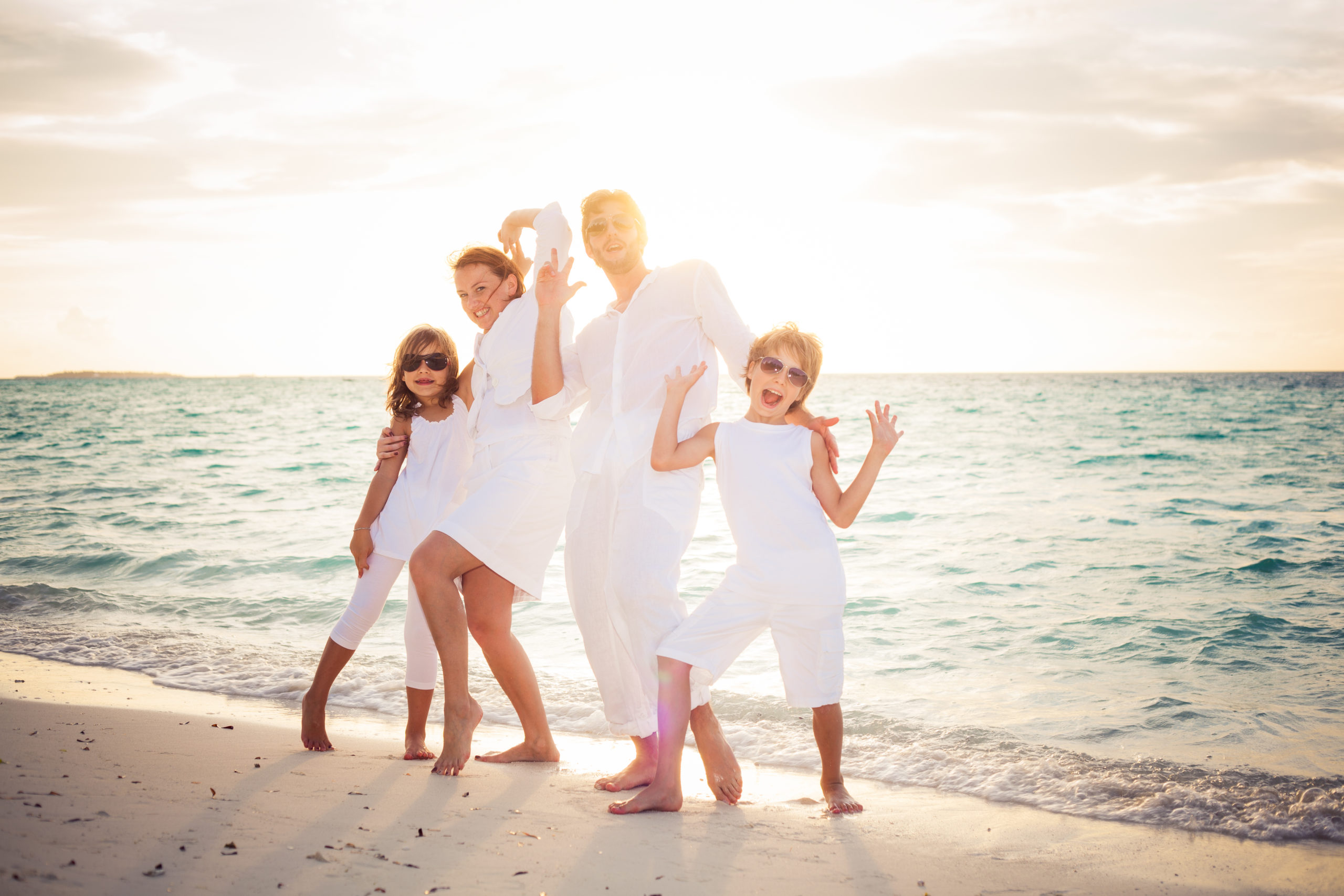


Dr. Amara Sayed
Vacation time for most of us is something to look forward to. A little planning ahead, especially with a family, makes things go a lot smoother and stress-free. Whether you are going on a trip to the beach, skiing in the mountains, or staying at a cabin by the lake, there is one thing that these vacations should have in common – sun safety for your family.
The number one thing you should pack is sunscreen for the entire family. Here’s a tip – be sure your sunscreen is not out of date…expired sunscreen can lead to burns. Always buy new sunscreen every season. If buying it once you get to your destination is your best option, make it a priority.
Packing sun protective clothing is a wise choice, regardless of age. Rash guards are a great way to have fun in the water and still be protected. Even if you’re not by the water, take clothes that have a high Ultraviolet Protection Factor (UPF). UPF measures how much UV radiation a fabric allows to reach your skin. A UPF of 30-49 is recommended for good protection, and anything over 50 is excellent. Some clothing manufacturers provide UPF labels, but if not, the American Academy of Dermatology’s website gives some great guidelines.
Wide brim hats will provide protection for your scalp, the top of your ears, and additional protection for your face. Don’t forget your eyes and lips! They are also vulnerable to sun damage. Use a lip balm with SPF, and for your eyes, select appropriate sunglasses. Wrap-around styles offer better protection and check to see that they are labeled to protect from UV rays. Not all sunglasses have that protection.
When selecting sunscreens, make sure it is a broad-spectrum sunscreen (protects from both UVB and UVA rays) with an SPF of 30 or higher and that it is a physical-based sunscreen (zinc or titanium dioxide.) If you opt for a spray sunscreen, don’t forget to rub it into the skin to avoid streaky coverage and, therefore, sunburn. Whether you choose creams, sprays, or sticks, you need to reapply every two hours or more frequently if you are sweating. If you are in the water, you want to reapply every hour and every time you get out of the water.
The Skin Cancer Foundation does not recommend sunscreen for babies younger than six months old. They suggest that you keep babies out of the sun altogether. Their skin is very vulnerable at this age, and you want to make sure that you keep them in the shade, use clothing that covers their arms and legs, and use the sun shield on your stroller. If you are going to be outside, try to avoid the hours between 9 a.m. to 3 p.m. or 10 a.m. to 4 p.m. (depending on the season) when the sun is the strongest. You can start using sunscreen once your baby is six months or older, but still protect them from direct sunlight and use sun-protective clothing.
If you are worried if sunscreen is not safe for your child, there are many great sunscreens for children. Even if it is a children’s brand, you should follow the same guidelines delineated above. Sunscreens in stick form are great for easy application and a lot less messy.
Where you decide to take your vacation can make a difference in the strength of the sun’s rays. Higher altitudes and locations closer to the equator have stronger UV rays. As you get closer to the sun, the air gets thinner, and you get less protection from the atmosphere. Being near water, sand, or snow, you must also consider the reflective nature of these surfaces. You are bombarded by UV rays from above as well as below.
If you are flying or driving to your destination, remember that glass and plastic cannot protect you from UVA rays, as they can penetrate these surfaces and still harm your skin.
Always try to seek shade, especially during peak hours. Do not be fooled by a cloudy day, either. You are getting less UV radiation, but that doesn’t mean you should stay out longer. You can still get burned on days like these.
This happens often. We are having so much fun that we forget to reapply sunscreen. Or we were so relaxed; we fell asleep in the sun. Now you have a sunburn. Here’s what you need to do to allow your skin to heal quickly and avoid more significant issues.
Apply aloe vera gel to your sunburnt areas as often as you can. Ice packs on your sunburn will also cool you down and help prevent blisters. Make sure you only take cool showers. Hot water will only make the situation worse. Take anti-inflammatories such as an ASA (i.e. aspirin) or ibuprofen if you have pain.
Burns can lead to dehydration, especially if they are severe. Hydrate by drinking extra water. Keep the burned area covered with loose-fitting clothing when you are outdoors.
If you develop blisters, allow them to heal on their own. Seek medical attention if you develop a fever or have blisters covering a large area of your body.
A little bit of planning and taking a few precautions while you’re on vacation can help prevent sunburns.
At Vitalogy Skincare, the health of our clients is our number one priority. If you have any questions about sun damage, skin cancer, or any other skin issue, book an appointment with Dr. Sayed or any of our other expert Providers. Check out our eight convenient locations in Central Texas.
Dr. Amara Sayed offers comprehensive medical, surgical, and cosmetic dermatology care at our Bastrop and San Marcos locations. Passionate about being an advocate for her patients, Dr. Sayed sees adolescents, adults, and elderly.